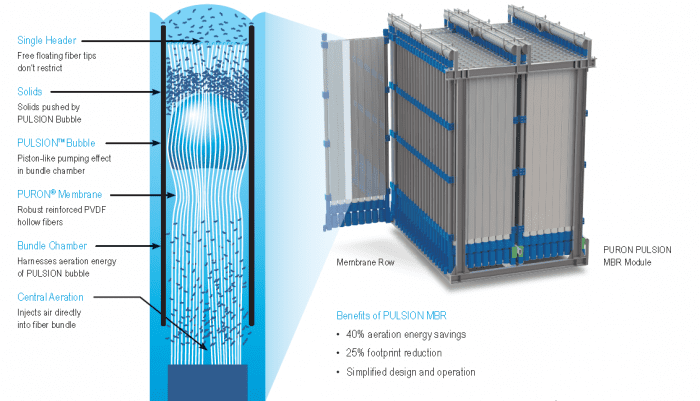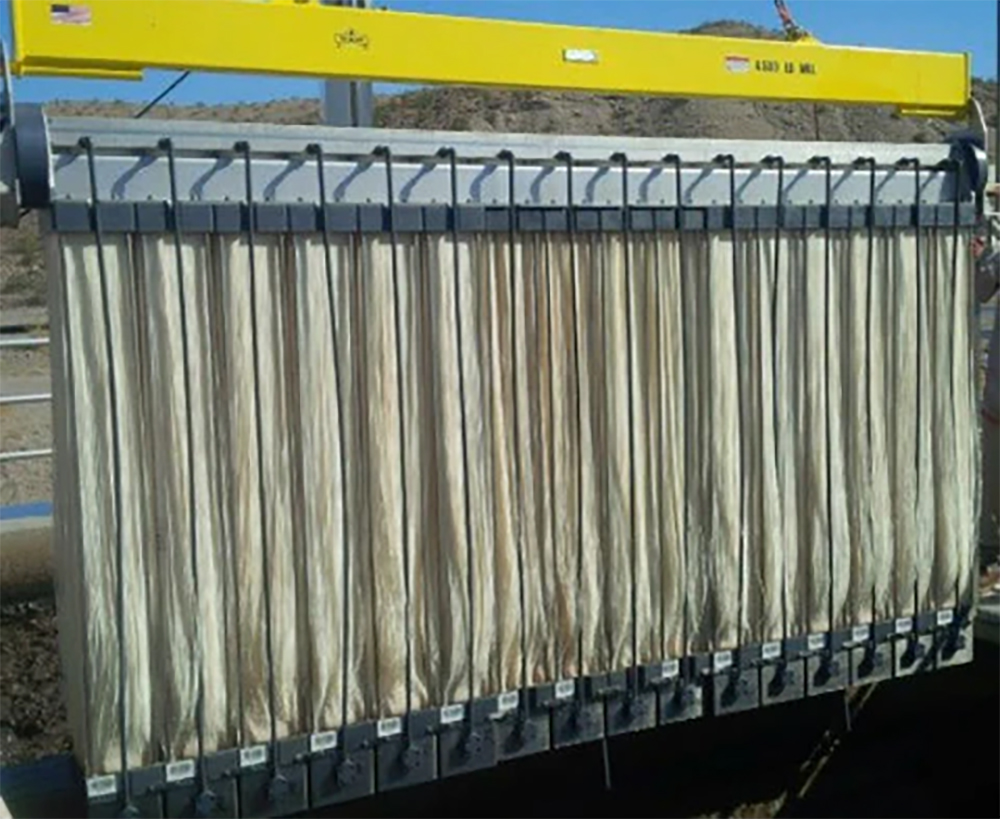How Membrane Bioreactor Can Improve the Quality of Wastewater Treatment
Just How Membrane Bioreactors Are Reinventing Water Purification Solutions
The emergence of membrane layer bioreactors (MBRs) stands for a substantial development in the area of water purification, merging organic therapy processes with sophisticated membrane filtering modern technologies. This integration not only boosts the quality of treated effluent yet also addresses metropolitan room constraints, making MBRs especially appropriate for largely populated areas. As worldwide water deficiency heightens, the duty of MBRs in facilitating drinkable water reuse and lasting water monitoring becomes progressively important. Yet, the implications of this innovation prolong past efficiency-- what difficulties and possibilities lie ahead for its extensive application?
Review of Membrane Layer Bioreactors
Membrane bioreactors (MBRs) represent a significant advancement in water purification modern technology, as they integrate biological treatment procedures with membrane filtration. This assimilation improves the effectiveness of wastewater treatment by making use of bacteria to degrade natural contaminants while at the same time employing semi-permeable membrane layers to separate cured water from suspended microorganisms and solids.
The MBR system usually contains an organic reactor where the microbial populace metabolizes pollutants, followed by a membrane layer filtration device that keeps biomass and allows just tidy water to go through. This twin performance results in greater effluent quality compared to standard treatment approaches. MBRs can be operated in both set and continuous circulation settings, providing adaptability in style and application.
In Addition, MBRs are defined by their portable footprint, making them appropriate for city settings with room constraints. Membrane Bioreactor. They likewise enable the healing of water for reuse, hence contributing to water sustainability campaigns. While MBR technology has obtained popularity in industrial and local applications, its functional complexities and energy needs necessitate mindful factor to consider during application. On the whole, MBRs are at the forefront of enhancing water therapy performance and quality, showcasing the capacity for ingenious remedies in environmental management.
Advantages of MBR Technology
The integration of organic treatment with membrane purification offers many benefits for water purification processes. One of the primary benefits of Membrane Bioreactor (MBR) technology is its ability to efficiently eliminate both organic and inorganic pollutants, causing top notch effluent. The membrane layers function as a physical obstacle, stopping suspended solids and pathogens from passing through, which enhances the total safety and security and dependability of treated water.
Additionally, MBR systems require a smaller sized impact compared to conventional therapy techniques, enabling much more reliable room use. This compact layout is specifically helpful in urban setups where land is restricted. MBRs also show operational flexibility, suiting varying influent qualities and circulation rates without substantial efficiency degradation.
In addition, the process offers boosted nutrient removal capacities, especially for nitrogen and phosphorus, which are crucial for protecting against eutrophication in getting waters. The reduced sludge manufacturing related to MBR modern technology likewise converts to lower disposal prices, making it an economical service in the lengthy run - Membrane Bioreactor. In general, the benefits of MBR technology setting it as a leading choice for ingenious and lasting water purification systems, attending to both ecological and economic worries
Applications in Water Purification
Applications of Membrane Bioreactor (MBR) modern technology in water purification are diverse and impactful, addressing different therapy needs across several fields. MBRs efficiently combine biological therapy processes with membrane layer filtration, making them perfect for community wastewater therapy, commercial effluent management, and also safe and clean water reuse campaigns.
In community settings, MBRs are increasingly utilized to improve the top quality of dealt with wastewater, permitting compliance with rigorous discharge laws and helping with the recycling of water for irrigation and non-potable usages. why not try these out Their compact style likewise makes them suitable for metropolitan environments where space is restricted.
Industrially, MBR modern technology is used to treat process water and wastewater, specifically in fields such as food and drink, drugs, and fabrics. By successfully removing pollutants and put on hold solids, MBRs assist industries lessen ecological impacts while recovering useful resources from wastewater streams.
In Addition, MBRs are getting traction in decentralized water treatment applications, where small systems can be released in remote locations or developing areas. This versatility makes it possible for neighborhoods to accomplish sustainable water management solutions, boosting access to clean water while minimizing dependence on conventional therapy methods.
Study and Success Stories

In another instance, a textile manufacturing facility in Bangladesh embraced MBR technology to resolve its wastewater obstacles. The system lowered chemical oxygen need (COD) degrees from 1,200 mg/L to less than 100 mg/L, therefore fulfilling regulatory criteria and significantly lessening ecological impact.
The University of Cape Town's MBR setup has verified reliable in dealing with greywater for non-potable reuse on school. This job not just conserves potable water yet also functions as an instructional design for sustainable techniques.
Additionally, a fish and shellfish processing plant in Norway used MBR modern technology to treat effluents including high degrees of natural matter, accomplishing over 90% pollutant removal. These instance researches emphasize MBR innovation's versatility and its important duty in boosting water quality across diverse applications.
Future of Water Treatment Solutions
As worldwide water deficiency and air pollution challenges heighten, cutting-edge water therapy remedies are becoming increasingly necessary to make sure lasting accessibility to tidy water. The future of water therapy exists in the assimilation of innovative modern technologies that boost the performance and effectiveness of purification procedures. Membrane layer bioreactors (MBRs) go to the center of this advancement, incorporating organic therapy with membrane layer filtering to create premium effluent appropriate for different applications.

Emerging fads such as source healing from wastewater, including nutrients and energy, will certainly additionally transform treatment centers right into environmentally friendly hubs. Furthermore, innovations in nanotechnology and membrane layer materials promise boosted performance and longevity of purification systems.

Final Thought
To conclude, membrane layer bioreactors represent a substantial development in water filtration modern technologies, properly integrating organic therapy with advanced membrane purification. The various benefits, including boosted effluent quality and minimized spatial requirements, make MBRs especially ideal for metropolitan applications. Their duty in potable water reuse and sustainable water monitoring highlights their significance in resolving worldwide water deficiency challenges. Continued research study and growth will additionally boost the efficacy and fostering of MBR modern technology, ensuring a durable future for water therapy solutions.
The development of membrane bioreactors (MBRs) represents a considerable improvement in the area of water filtration, combining organic therapy processes with innovative membrane layer filtering innovations. As worldwide water shortage escalates, the duty of MBRs in facilitating potable water reuse and lasting water monitoring comes to be significantly essential. They additionally make it possible for the recuperation of water for reuse, therefore contributing to water sustainability efforts.As global water scarcity and pollution obstacles escalate, cutting-edge water treatment services are becoming increasingly essential to make certain lasting access to clean water. Their duty in drinkable water reuse and sustainable water management highlights their relevance in attending to worldwide water scarcity obstacles.